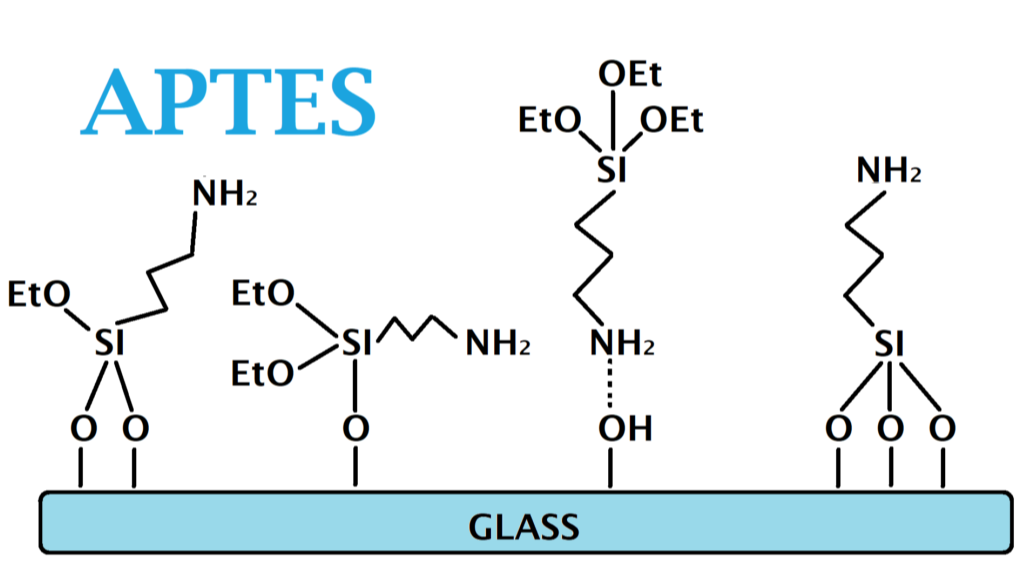
- English
- Español
- Português
- русский
- Français
- 日本語
- Deutsch
- tiếng Việt
- Italiano
- Nederlands
- ภาษาไทย
- Polski
- 한국어
- Svenska
- magyar
- Malay
- বাংলা ভাষার
- Dansk
- Suomi
- हिन्दी
- Pilipino
- Türkçe
- Gaeilge
- العربية
- Indonesia
- Norsk
- تمل
- český
- ελληνικά
- український
- Javanese
- فارسی
- தமிழ்
- తెలుగు
- नेपाली
- Burmese
- български
- ລາວ
- Latine
- Қазақша
- Euskal
- Azərbaycan
- Slovenský jazyk
- Македонски
- Lietuvos
- Eesti Keel
- Română
- Slovenski
- मराठी
- Srpski језик
ALD Atomic Layer Deposition Recipe
2024-07-27
Spatial ALD, spatially isolated atomic layer deposition. The wafer moves between different positions and is exposed to different precursors at each position. The figure below is a comparison between traditional ALD and spatially isolated ALD.
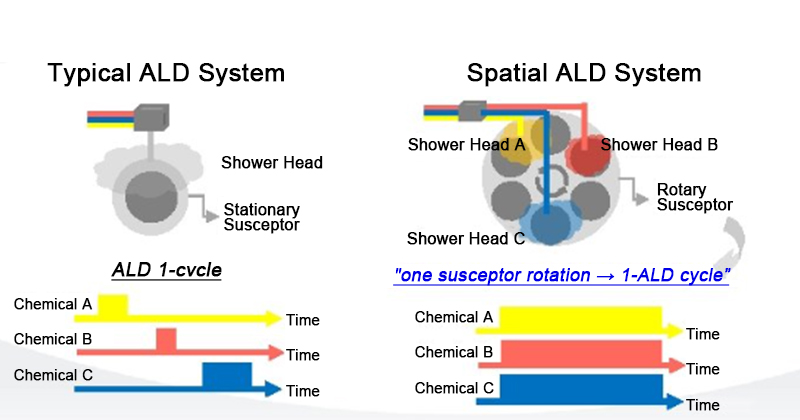
Temporal ALD, temporally isolated atomic layer deposition. The wafer is fixed and the precursors are alternately introduced and removed in the chamber. This method can process the wafer in a more balanced environment, thereby improving the results, such as better control of the range of critical dimensions. The figure below is a schematic diagram of Temporal ALD.
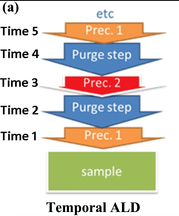
Stop valve, close valve. Commonly used in , recipes, used to close the valve to the vacuum pump, or open the stop valve to the vacuum pump.
Precursor, precursor. Two or more, each containing the elements of the desired deposited film, are alternately adsorbed on the substrate surface, with only one precursor at a time, independent of each other. Each precursor saturates the substrate surface to form a monolayer. The precursor can be seen in the figure below.
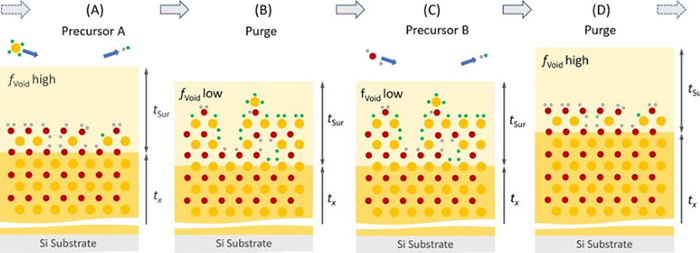
Purge, also known as purification. Common purge gas, purge gas. Atomic layer deposition is a method of depositing thin films in atomic layers by sequentially placing two or more reactants into a reaction chamber for forming a thin film through the decomposition and adsorption of each reactant. That is, the first reaction gas is supplied in a pulsed manner to chemically deposit inside the chamber, and the physically bonded residual first reaction gas is removed by purging. Then, the second reaction gas also forms a chemical bond with the first reaction gas in part through the pulse and purge process, thereby depositing the desired film on the substrate. Purge can be seen in the figure below.
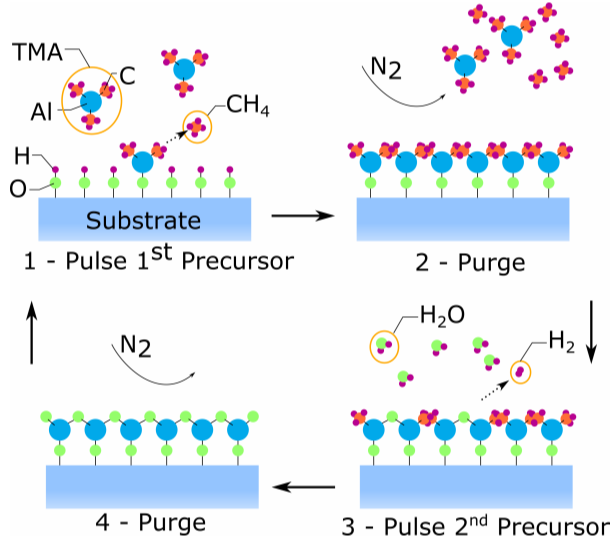
Cycle. In the atomic layer deposition process, the time for each reaction gas to be pulsed and purged once is called a cycle.
Atomic Layer Epitaxy. Another term for atomic layer deposition.
Trimethylaluminum, abbreviated as TMA, trimethylaluminum. In atomic layer deposition, TMA is often used as a precursor to form Al2O3. Normally, TMA and H2O form Al2O3. In addition, TMA and O3 form Al2O3. The figure below is a schematic diagram of Al2O3 atomic layer deposition, using TMA and H2O as precursors.
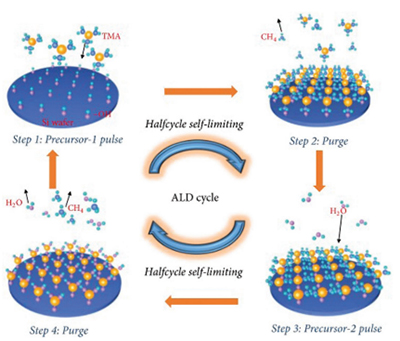
3-Aminopropyltriethoxysilane, referred to as APTES, 3-aminopropyltrimethoxysilane. In atomic layer deposition, APTES is often used as a precursor to form SiO2. Normally, APTES, O3 and H2O form SiO2. The figure below is a schematic diagram of APTES.
